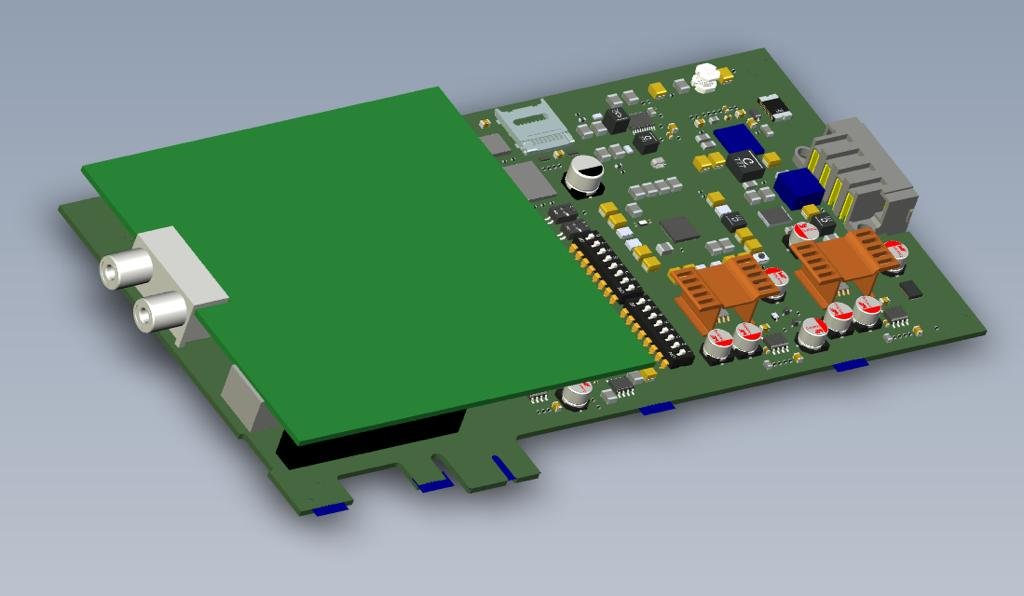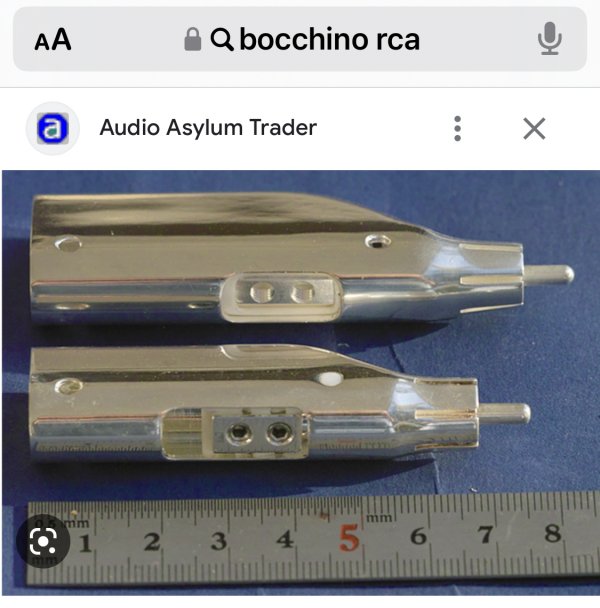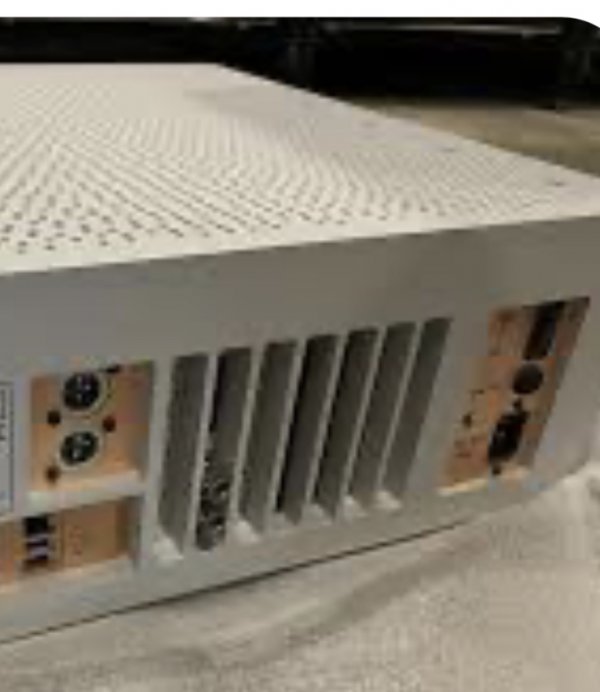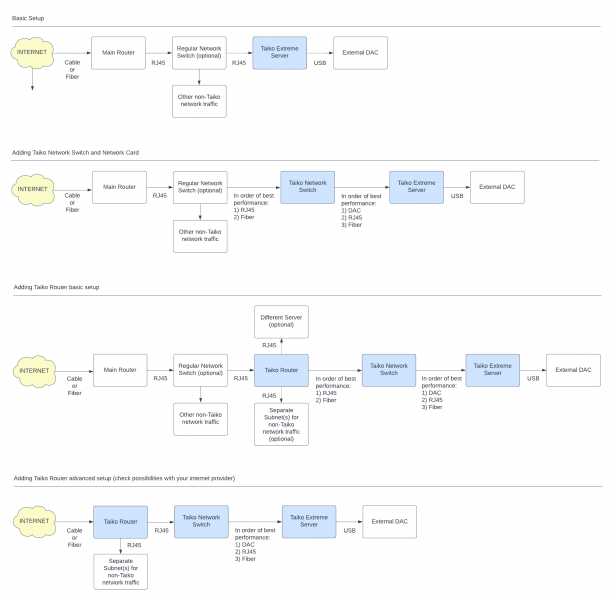Do you know how many cores were used to develop these calculations? It used to take a minute to encode a hi res file set. Now it takes about 10 seconds with a multi-core CPU.
Taiko Audio SGM Extreme : the Crème de la Crème
- Thread starter CKKeung
- Start date
You are using an out of date browser. It may not display this or other websites correctly.
You should upgrade or use an alternative browser.
You should upgrade or use an alternative browser.
Since one of the ways Taiko strives to reach its goal of best sound quality is to minimize CPU load I'd guess that not using compression would be in line with that aim.
This part still confuses me since I have always assumed that any decoding is done prior to playing so by the time the DAC "receives" the entire song or album the CPU load is zero from the decoding process. Maybe that's not how it works.
Yes, you are absolutely correct -- lossless uncompressed is exactly that, and not level 0, as I incorrectly wrote. 0 to 8 goes from least compressed/largest file size to most compressed/smallest file size.Thanks, I'll try AIFF instead of FLAC, with I suppose 16bit depth for CD.
Does the Extreme play AIFF? I thought it may not since AIFF is an Apple standard...
At least with dBpoweramp, FLAC uncompressed is Level 9, or no level, to be precise
View attachment 104808
Steve Z
This part still confuses me since I have always assumed that any decoding is done prior to playing so by the time the DAC "receives" the entire song or album the CPU load is zero from the decoding process. Maybe that's not how it works.
I suspect there is more going on, e.g. byte ordering, but I'm not an expert on this. I remember Porzilli had memory mapping and other techniques that were supposed to impact SQ.
Emile has, if I'm interpreting him correctly, referred to getting the data directly from the CPU for TACD as being beneficial as well as the s/w architecture and s/w algorithms. I bet there is a lot going on there. Maybe we'll be privy to the details some day
I don’t know how Taiko implemented their software, but in Roon, playing back a high res file that’s DSD encoded into a non-native DSD dac can require significant CPU resources. I’ve run Roon on a large variety of hardware over the past 5 years, including a 60 core Xenon server workstation that I use for high end computing research, and Roon can consume a lot of resources on smaller CPUs (on my beefy workstation, it’s not even a blip). On an Intel NUC with an i7 quad core, it can take a large chunk of CPU to render a high resolution file. If you turn on high levels of upsampling, e.g., DSD 512, you’d better have a CPU that can support that level of number crunching.This part still confuses me since I have always assumed that any decoding is done prior to playing so by the time the DAC "receives" the entire song or album the CPU load is zero from the decoding process. Maybe that's not how it works.
Whether it makes any sense to upsample a 16-bit Redbook standard flac file to DSD 512 is another matter. That’s a subjective call. It might make more sense to use a customized FPGA chip to do high levels of upsampling. My Chord Blu Mk2 transport has a built in M-Scaler that implements Rob Watts’ million tap filter, which upsamples all CDs to 32-bit 768 kHz high bit rate data stream that is sent to the Dave via four BNC connectors. It takes a lot of compute power to do this number crunching.
Christiaan Punter
Well-Known Member
The last time I did such comparative tests will be at least 10 years ago, probably closer to 15. But I seem to recall that FLAC sounded like FLAC, no matter the compression level. I'm not 100% sure but I did choose at that point to go with WAV instead, especially since uncompressed FLAC files are very large and it became possible to tag WAV just like mp3.Hi Christiaan,
Thank you. Now, what compression level would you suggest for FLAC? Is there a benefit to ripping a CD using "Lossless Uncompressed" FLAC in dBpoweramp, or should the default Lossless level 5 be used?
I guess there will be less processing time for the Extreme is the file is stored uncompressed?
The last time I did such comparative tests will be at least 10 years ago, probably closer to 15. But I seem to recall that FLAC sounded like FLAC, no matter the compression level. I'm not 100% sure but I did choose at that point to go with WAV instead, especially since uncompressed FLAC files are very large and it became possible to tag WAV just like mp3.
Ultimately uncompressed .wav sounds best. However XDMS is going to remove these differences.
Well, I read it. Twice. I didn't understand much of it but that's OK with me. As long as you understand it, I'm happy.The early information surrounding the TACDA and TACDD could be interpreted to mean one is analog and the other is digital but this is not the case. As time went by, new insights were gained and new decisions were made. Rather than making several versions, the board will now be modular and will support output modules that can be analog or digital and can cater to a range of formats. Note that the final name is still pending, “TACDA” is a temporary unofficial name that we use internally.
- TACDA is the card hardware (that can be either analog or digital)
- TACDD is what we call the interface format
Please see the attached TACDA / TACDD documentation for more information.

All I want is a button to push! With the switch/board arriving soon and my imminent trial of XDMS, I'm sure I'll be very pleased. If further greatness awaits in Taiko Adventure land, even better.
Last edited:
I knew it! I just knew it -- Emile *did* have long hair in his youth!Well, I read it. Twice. I didn't understand much of it but that's OK with me. As long as you understand it, I'm happy.
View attachment 104817
All I want is a button to push! With the switch/board arriving soon and my imminent trial of XDMS, I'm sure I'll be very pleased. If further greatness awaits in Taiko Adventure land, even better.

Steve Z
This part still confuses me since I have always assumed that any decoding is done prior to playing so by the time the DAC "receives" the entire song or album the CPU load is zero from the decoding process. Maybe that's not how it works.
Try putting some Sheik's Private Reserve in your fuel tank.
Emile seems confident Taiko can build a more input resistant audio engine that burns through everything like it was anointed by the stars.
Christiaan Punter
Well-Known Member
Hi all, it is often said that a picture says more than a thousand words... certainly, in the case of our upcoming TACD Modular PCIe interface card, I think this will be true! 
Shown below is the modular TACD PCIe main board with a daughterboard on top of it. In this case, the daughter board is the analog version with onboard DAC and stereo RCA outputs.

We have decided on a modular build for the TACD PCIe card to be able to accommodate a wide range of interface options at a reasonable price level. Going modular protects the value of the investment into the interface/controller technology which is by far the costliest part of the design.
To change the output interface of the TACD card, all it takes is to attach a different version daughterboard, each of which will cater to one specific function from an array of options such as:
An updated and further clarified version of the Summary doc can be found below.
Shown below is the modular TACD PCIe main board with a daughterboard on top of it. In this case, the daughter board is the analog version with onboard DAC and stereo RCA outputs.

We have decided on a modular build for the TACD PCIe card to be able to accommodate a wide range of interface options at a reasonable price level. Going modular protects the value of the investment into the interface/controller technology which is by far the costliest part of the design.
To change the output interface of the TACD card, all it takes is to attach a different version daughterboard, each of which will cater to one specific function from an array of options such as:
- A DAC with Analog output (as shown above)
- Generic S/PDIF, AES/EBU, I2s, or other digital formats
- Custom output like MSB Pro ISL
- New Taiko proprietary interface
An updated and further clarified version of the Summary doc can be found below.
Attachments
Last edited:
Is it too late to request that the analog RCA outputs be spaced appropriately apart in order to use our crazy audiophile cables/connectors?Hi all, it is often said that a picture says more than a thousand words... certainly, in the case of our upcoming TACD Modular PCIe interface card, I think this will be true!
Shown below is the modular TACD PCIe main board with a daughterboard on top of it. In this case, the daughter board is the analog version with onboard DAC and stereo RCA outputs.
View attachment 104874
We have decided on a modular build for the TACD PCIe card to be able to accommodate a wide range of interface options at a reasonable price level. Going modular protects the value of the investment into the interface/controller technology which is by far the costliest part of the design.
To change the output interface of the TACD card, all it takes is to attach a different version daughterboard, each of which will cater to one specific function from an array of options such as:
USB will not be added, and as such, the TACD cards will not substitute the Taiko Enhanced USB card.
- A DAC with Analog output (as shown above)
- Generic S/PDIF, AES/EBU, I2s, or other digital formats
- Custom output like MSB Pro ISL
- New Taiko proprietary interface
An updated and further clarified version of the Summary doc can be found below.
Another request to have the RCAs stick out further so when this card gets installed in the Extreme, the RCA’s won’t sit too deep inside the “grooves” in the back so that it will work with all cables.


Last edited:
Christiaan Punter
Well-Known Member
I see MSB, Total DAC, and DCS application. I don't see anything how Lampizator will potentially approach this. Will we have to ship back tp Poland in order to accomplish this? I realize premature, but it would be nice to know our destiny/approach in this regard...Hi all, it is often said that a picture says more than a thousand words... certainly, in the case of our upcoming TACD Modular PCIe interface card, I think this will be true!
Shown below is the modular TACD PCIe main board with a daughterboard on top of it. In this case, the daughter board is the analog version with onboard DAC and stereo RCA outputs.
View attachment 104874
We have decided on a modular build for the TACD PCIe card to be able to accommodate a wide range of interface options at a reasonable price level. Going modular protects the value of the investment into the interface/controller technology which is by far the costliest part of the design.
To change the output interface of the TACD card, all it takes is to attach a different version daughterboard, each of which will cater to one specific function from an array of options such as:
USB will not be added, and as such, the TACD cards will not substitute the Taiko Enhanced USB card.
- A DAC with Analog output (as shown above)
- Generic S/PDIF, AES/EBU, I2s, or other digital formats
- Custom output like MSB Pro ISL
- New Taiko proprietary interface
An updated and further clarified version of the Summary doc can be found below.
I see MSB, Total DAC, and DCS application. I don't see anything how Lampizator will potentially approach this. Will we have to ship back tp Poland in order to accomplish this? I realize premature, but it would be nice to know our destiny/approach in this regard...
Too premature.
Is it too late to request that the analog RCA outputs be spaced appropriately apart in order to use our crazy audiophile cables/connectors?
Another request to have the RCAs stick out further so when this card gets installed in the Extreme, the RCA’s won’t sit too deep inside the “grooves” in the back so that it will work with all cables.
View attachment 104878View attachment 104876
Those Bocchinos would annihilate PCB mounted RCA connectors. They can even damage chassis mounted RCA connectors
Despite their huge audiophile coolness factor we cannot support them for this application.
Christiaan Punter
Well-Known Member
That is correct. One opts for one version, either analog or one of the digital options.Question, does this mean that a digital output (eg. dual bnc) and an analog output (eg. rca) can no longer coexist without opening the case and changing a daughter board?
But I can buy it, buy two daughterboards (one analog one dual bnc) and be able to switch them around, right?That is correct. One opts for one version, either analog or one of the digital options.
(it wasn't sure to me if 'modular' also meant the daughterboard can be either analog or digital, or if it can only be one type)
Similar threads
- Replies
- 225
- Views
- 32K
- Replies
- 252
- Views
- 34K
- Replies
- 415
- Views
- 63K
| Steve Williams Site Founder | Site Owner | Administrator | Ron Resnick Site Owner | Administrator | Julian (The Fixer) Website Build | Marketing Managersing |











